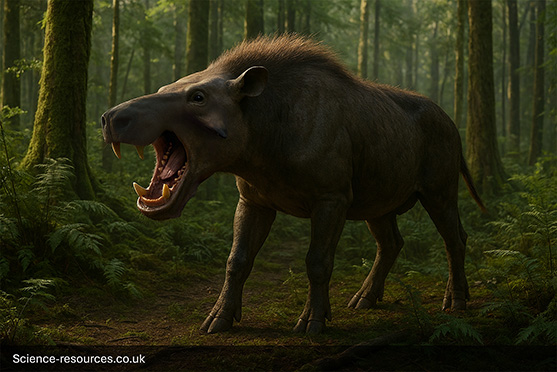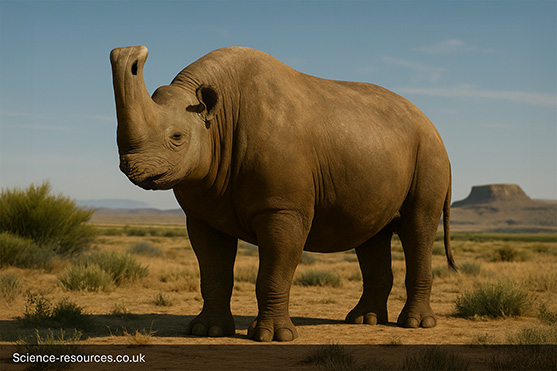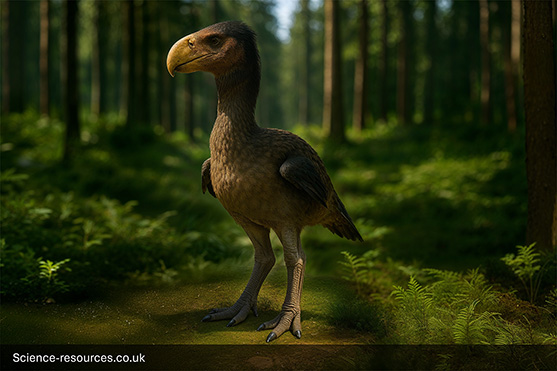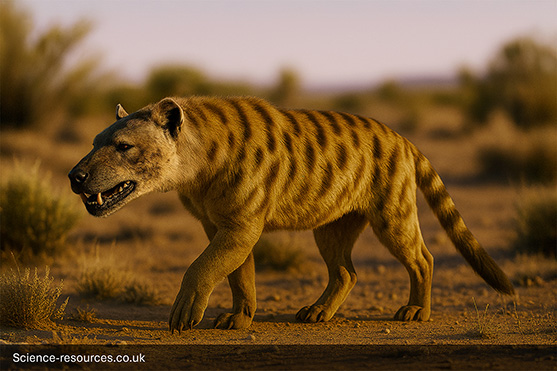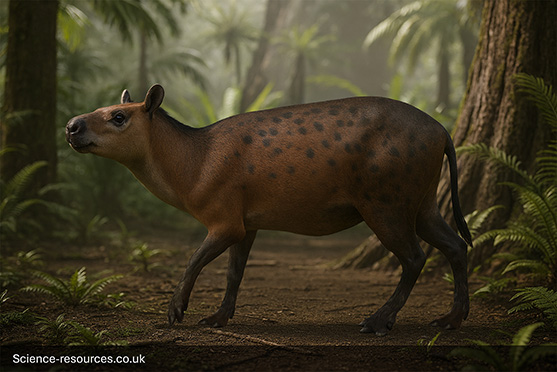Last updated: 4th August 2025
When They Lived: Eocene
The Eocene Epoch
The Eocene Epoch lasted from about 56 to 33.9 million years ago. Following the extinction event that ended the age of dinosaurs, the Eocene was a time of immense change and a "hot house" climate. It was one of the warmest periods in Earth's history, with temperatures so high that tropical forests and lush vegetation grew in places like Antarctica and the Arctic Circle. During this time, the Earth's continents were still shifting. Australia and Antarctica began to separate, and the Atlantic Ocean continued to widen. This period is often called the "Age of Mammals" because many of the modern mammal groups, such as bats, primates, and rodents, first appeared and diversified. Early versions of horses, rhinoceroses, and elephants also evolved. On land, the dominant predators were not mammals but large, flightless birds like Gastornis. Towards the end of the Eocene, the climate began to cool, leading to a major faunal turnover. This cooling trend would continue into the next epoch and pave the way for the development of different ecosystems and new animal species.
Featured animals from this time:
Entelodont
Entelodont was a massive, pig-like omnivore that lived during the late Eocene to Miocene. They had a huge head, strong jaws, and a bulky body, making them a formidable scavenger and predator.
Embolotherium
Embolotherium was a rhino-like herbivore from the Eocene of Central Asia. It had a large, bony crest on its head, possibly used for display or sound resonance, and browsed on soft vegetation.
Gastornis
Gastornis was a giant, flightless bird that lived in Europe and North America during the Paleocene and Eocene. It had a massive beak and imposing size, and may have been herbivorous or omnivorous.
Hyaenodon
Hyaenodon was a large carnivorous mammal that lived from the Eocene to Miocene epochs. It had a long skull with powerful jaws and was a dominant predator in its environment, capable of crushing bone with ease.
Eohippus
Eohippus was one of the earliest known horse ancestors, living in North America during the early Eocene. The size of a small dog, Eohippus had multiple toes and a lightly built frame, adapted for forested environments. Its diet of soft vegetation and agility made it a successful browser in its ancient ecosystem.
Basilosaurus
Basilosaurus was a gigantic prehistoric whale that swam in the world’s oceans millions of years ago. It was one of the first fully aquatic whales and a top predator during its time.
You may also be intrested in:
- Extinct Animals: A-Z
- Dinosaurs: A-Z
Tags: Hyaenodon, Entelodont, Gastornis, Embolotherium, Eocene epoch
© 2012 science-resources.co.uk. All rights reserved | Design by W3layouts
When They Lived: Eocene
The Eocene Epoch
The Eocene Epoch lasted from about 56 to 33.9 million years ago. Following the extinction event that ended the age of dinosaurs, the Eocene was a time of immense change and a "hot house" climate. It was one of the warmest periods in Earth's history, with temperatures so high that tropical forests and lush vegetation grew in places like Antarctica and the Arctic Circle. During this time, the Earth's continents were still shifting. Australia and Antarctica began to separate, and the Atlantic Ocean continued to widen. This period is often called the "Age of Mammals" because many of the modern mammal groups, such as bats, primates, and rodents, first appeared and diversified. Early versions of horses, rhinoceroses, and elephants also evolved. On land, the dominant predators were not mammals but large, flightless birds like Gastornis. Towards the end of the Eocene, the climate began to cool, leading to a major faunal turnover. This cooling trend would continue into the next epoch and pave the way for the development of different ecosystems and new animal species.
Featured animals from this time:
Entelodont
Entelodont was a massive, pig-like omnivore that lived during the late Eocene to Miocene. They had a huge head, strong jaws, and a bulky body, making them a formidable scavenger and predator.
Embolotherium
Embolotherium was a rhino-like herbivore from the Eocene of Central Asia. It had a large, bony crest on its head, possibly used for display or sound resonance, and browsed on soft vegetation.
Gastornis
Gastornis was a giant, flightless bird that lived in Europe and North America during the Paleocene and Eocene. It had a massive beak and imposing size, and may have been herbivorous or omnivorous.
Hyaenodon
Hyaenodon was a large carnivorous mammal that lived from the Eocene to Miocene epochs. It had a long skull with powerful jaws and was a dominant predator in its environment, capable of crushing bone with ease.
Eohippus
Eohippus was one of the earliest known horse ancestors, living in North America during the early Eocene. The size of a small dog, Eohippus had multiple toes and a lightly built frame, adapted for forested environments. Its diet of soft vegetation and agility made it a successful browser in its ancient ecosystem.
Basilosaurus
Basilosaurus was a gigantic prehistoric whale that swam in the world’s oceans millions of years ago. It was one of the first fully aquatic whales and a top predator during its time.
Tags: Hyaenodon, Entelodont, Gastornis, Embolotherium, Eocene epoch
© 2012 science-resources.co.uk. All rights reserved | Design by W3layouts
